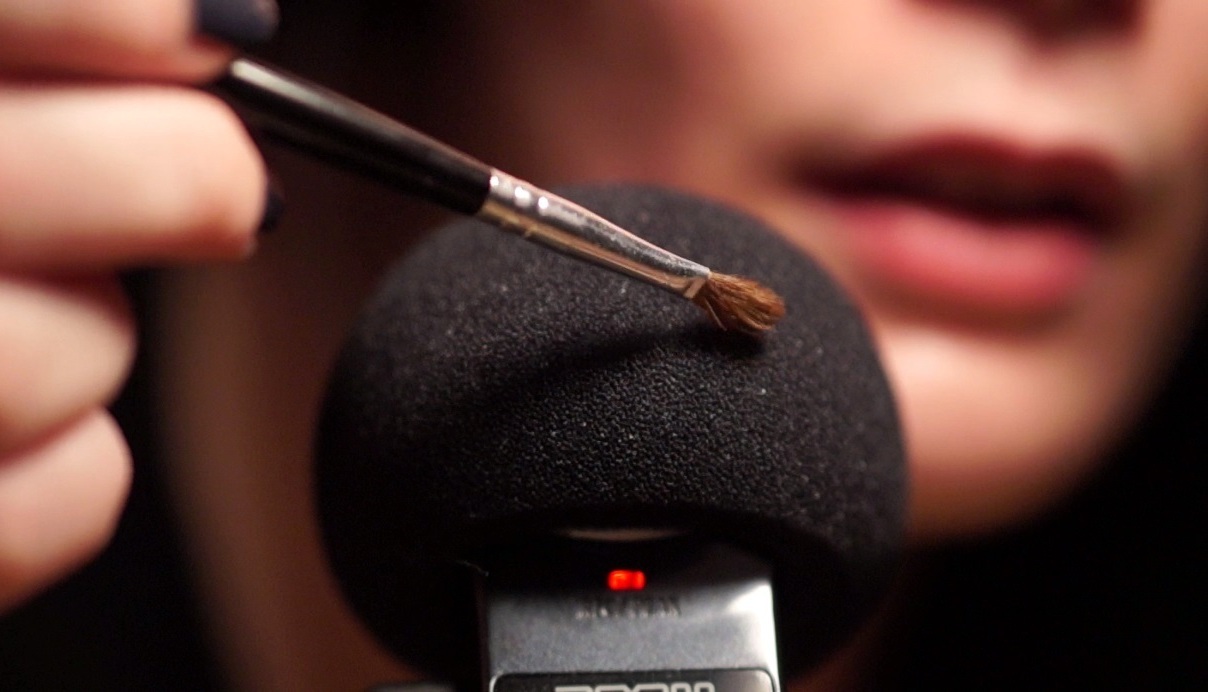Midterm season feels like trial by fire. Every day brings paper deadlines, exam study sessions and even more stress. Laptop keys keep clattering, textbook pages keep flipping and the entire campus collectively tenses up, unwilling to release until exhaustion finally takes over.
This entire environment actually hinders academic performance, tripping people up when they need to be at their sharpest. A study done by The University of Michigan found that students who reported moderate to high amounts of stress have significantly lower GPAs than their more relaxed classmates. This same study also discovered that those who were able to effectively manage their stress have higher GPAs overall. Basically, in order to get ahead you have to take a step back every once in a while.
A new YouTube hidden trend, ASMR, standing for Auditory Sensory Meridian Response, features content that can help you relax in the whirlpool of pressure that is higher education by providing a little bit of breathing room for your brain.
ASMR is most commonly described as a “tingly” experience during which a person may feel a static-like sensation on their skin that usually starts on the scalp or back of the spine. These sensations are known as “tingles” in the ASMR community and are usually followed by a feeling of euphoria or intense calm in those that are most affected.
Even if you don’t experience ASMR physically or have milder “tingles” it can still act as a sleep aid, soothing background noise or as a simple method to help you destress.
According to the latest data from Google Trends, the phenomena first began to gain momentum online in 2011 and since then it’s popularity skyrocketed. With this boost, the online presence of those who create ASMR content, known as ASMRtists or ASMRers, has also grown exponentially, with some channels’ subscriber counts clocking in close to and above the five hundred thousand mark.
With an ever-growing number of people interested in and creating ASMR content, the subject is becoming more and more mainstream. You’ve probably even seen a few ASMR videos without realizing it. Those oddly satisfying paint mixing clips that seemed to take over Instagram overnight? Favorite vloggers suddenly developing a deep, undying love for squishy hauls? #slime? All of these came with the upward trend in ASMR’s popularity.
ASMR content started being published and shared online 10 years ago, and today the sheer variety of content available is staggering, with new media being generated every day. Mainly in video form, the topics can stretch to include anything from roleplaying a haircut to an interview with the Joker to the sounds of someone chewing gum into a microphone for 45 minutes. The quality varies along this same spectrum from slick, high tech visual effects to grainy cell phone video shot vertically, so there’s something for everyone.
What began as a few people messaging on a forum board became a global movement. Now ASMRtists new and old are working to make sure people chill out across the world. They use triggers—sounds or movements meant to induce “tingles”—in their videos deliberately and with a certain personal touch. Common triggers include soft speaking/whispering, light tapping, personal attention, deliberate hand gestures, crinkling paper and the “sk” sound (think “sk-inny”).
The beauty of ASMR lies in its simplicity; since all of the triggers and movements used are very precise it allows your mind to focus on a simple task with no heavy consequences attached to it, which can relieve tension.
It may seem like a strange niche of the Internet, like those YouTube channels devoted entirely to describing the spin cycle on a washing machine, but ASMR can actually be quite effective.
Several scientists have compared ASMR and meditative practice. As suggested by Carl Bazil, Professor of Neurology at Columbia University Medical Center and director of its Sleep Disorders Center, ASMR videos share many similarities with guided imagery and progressive relaxation, two techniques that have been shown to reduce tension levels.
Many content creators facilitate this by acting as relaxation guides for their viewers, encouraging deep, steady breathing and calm thoughts. ASMR can also be used as a study aid, as supported by an experiment conducted at Swansea University by psychologists Nick Davis and Emma Barratt. Their investigation found that there is a connection between the “tingles” that ASMR provides and “flow”, the mental state in which someone is fully absorbed in the activity at hand.
So sit back and just listen for a little while. Turn your brain off and your ears on.

